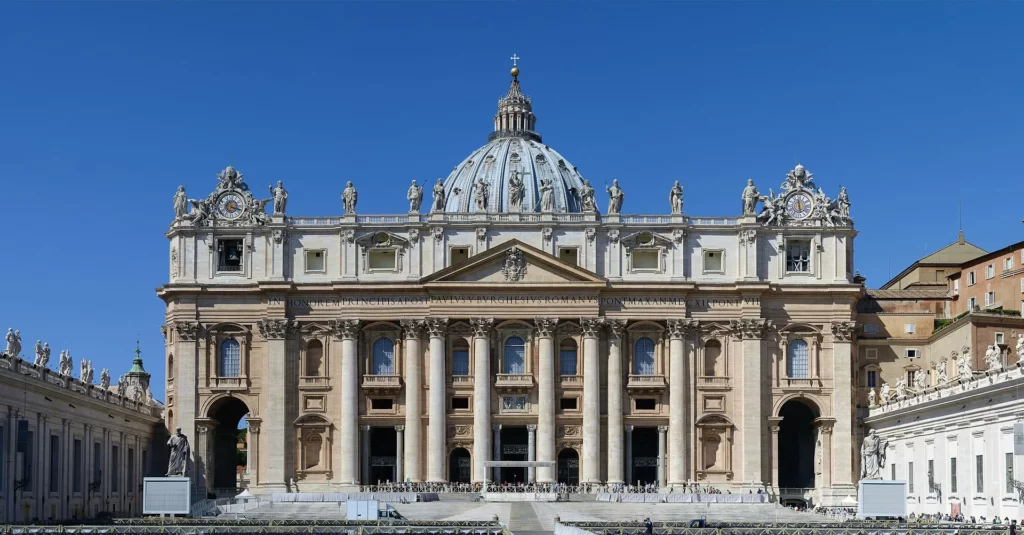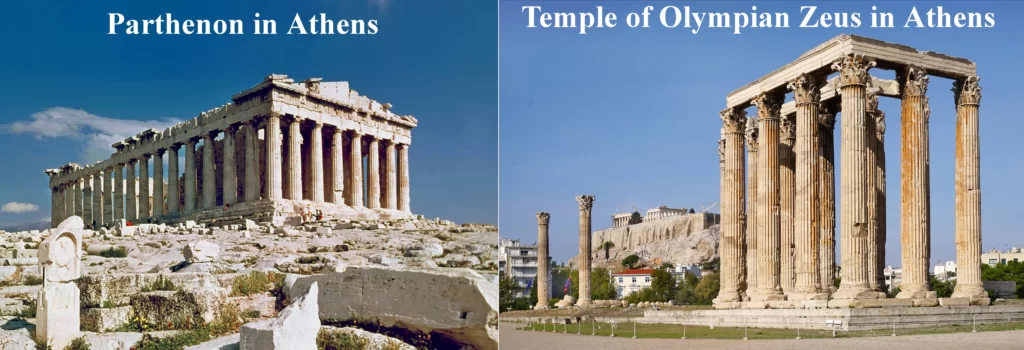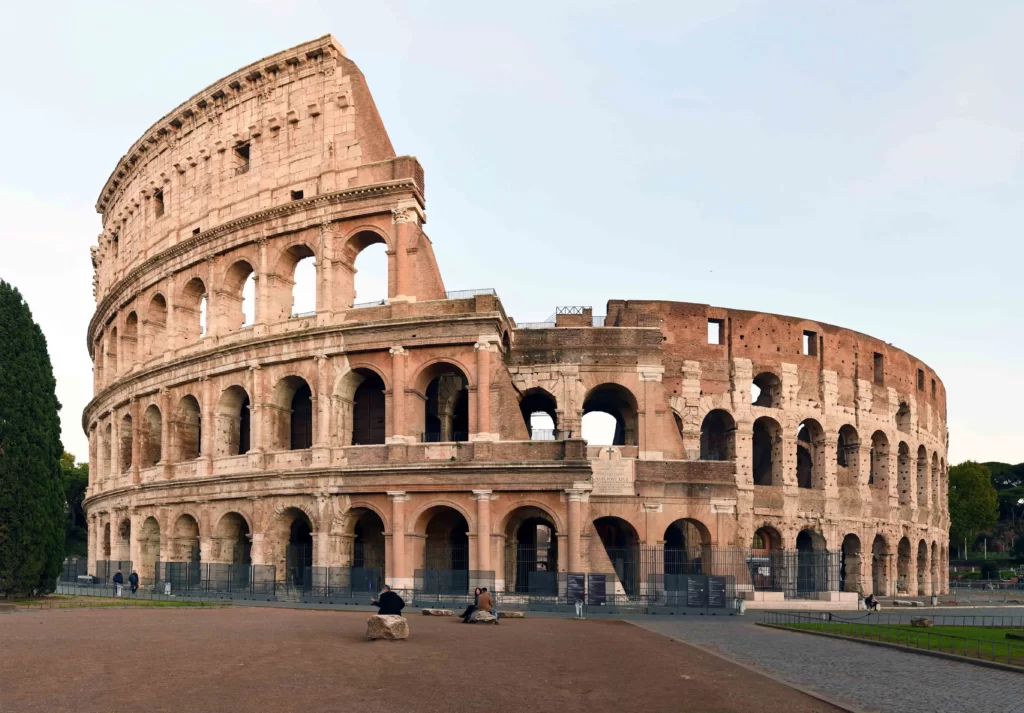If you want to know about the classical-architecture or staircase design or landscape garden, please click the link.
Introduction
Classical-Architecture is a design style that dates back to ancient Greece and Rome, characterized by a focus on symmetry, proportion, and the use of specific architectural features such as columns, pediments, and entablatures. This style has been widely used throughout history and continues to be influential in contemporary architecture.

Brief history of Classical Architecture
Classical Architecture has its roots in ancient Greek and Roman architecture. The Greeks developed a system of architectural orders, which included the Doric, Ionic, and Corinthian orders, each characterized by its own distinctive column style and proportions.
The Romans built upon these traditions, incorporating their own innovations such as arches and domes. During the Renaissance, classical architecture was rediscovered and celebrated, leading to the creation of iconic buildings such as St. Peter’s Basilica in Rome.

The popularity of classical architecture continued throughout the Baroque and Neoclassical periods, and even today, architects continue to draw inspiration from its timeless principles.
Importance of Classical Architecture
Classical Architecture has played a significant role in the development of Western architecture and has inspired countless architects and designers throughout history. Its emphasis on harmony, proportion, and beauty has made it a timeless style that continues to influence contemporary architecture.
Moreover, classical architecture serves as a reminder of the achievements of ancient civilizations and their lasting contributions to culture, art, and architecture.
Finally, preserving and restoring classical buildings and monuments helps to maintain a connection to our cultural heritage and allows future generations to appreciate and learn from them.
1) Elements of Classical Architecture
Classical Architecture is characterized by several key elements that are used to create a sense of balance, harmony, and order in a building.
Here are five important elements of classical architecture:
- Columns: Columns are an essential part of classical architecture and are used to support the weight of the building and create a sense of verticality. The three main types of columns are Doric, Ionic, and Corinthian, each with its own distinct style and proportions.
- Pediments: A pediment is a triangular structure that sits atop a building’s facade and is supported by columns. It is typically used to give the building a sense of grandeur and importance and often features intricate sculptural details.
- Friezes: Friezes are decorative bands that run horizontally along the upper part of a building’s facade. They often feature relief sculpture or intricate ornamentation and are used to add visual interest and texture to a building’s exterior.
- Cornices: Cornices are horizontal projections that run along the top of a building’s facade and are used to provide a sense of transition between the building’s exterior walls and its roof. They often feature elaborate molding and decorative details.
- Entablatures: Entablatures are horizontal elements that sit atop a building’s columns and support the roof. They are composed of three parts: the architrave, which sits directly on top of the columns; the frieze, which runs horizontally along the top of the architrave; and the cornice, which sits atop the frieze and provides a decorative finish to the entablature.
2) Types of Classical Architecture
Classical architecture can be divided into several distinct styles that emerged at different points in history. Here are three important types of classical architecture:
Greek Classical Architecture:
Greek Classical Architecture emerged in the 5th century BC and is characterized by its emphasis on harmony, proportion, and balance.
It is known for its use of the Doric, Ionic, and Corinthian orders and its focus on symmetry and mathematical ratios.
Famous examples of Greek Classical Architecture include the Parthenon in Athens and the Temple of Olympian Zeus in Athens.

Roman Classical Architecture:
Roman Classical Architecture emerged in the 1st century BC and was heavily influenced by Greek architecture. It is known for its use of arches, vaults, and domes, which allowed for larger and more complex buildings.
Roman architecture also placed a greater emphasis on engineering and practicality, with buildings designed to serve specific functions.
Famous examples of Roman Classical Architecture include the Colosseum in Rome and the Pantheon in Rome.

Renaissance Classical Architecture:
Renaissance Classical Architecture emerged in Italy during the 15th century and was inspired by the rediscovery of classical art and architecture.
Renaissance architects sought to emulate the proportions and mathematical principles of classical architecture, while also incorporating new techniques and materials. Renaissance buildings often featured elaborate ornamentation and intricate details, such as the use of pilasters and pediments.
Famous examples of Renaissance Classical Architecture include St. Peter’s Basilica in Rome and the Palazzo Medici Riccardi in Florence.

3) Principles or Characteristics of Classical Architecture
Classical architecture is based on a set of principles that guide the design and construction of buildings. These principles are focused on creating a sense of order, harmony, and balance in the built environment. Here are five important principles of classical architecture:
- Symmetry: Symmetry is a fundamental principle of classical architecture, which emphasizes the importance of balance and proportion in the design of buildings. Buildings are typically symmetrical, with identical elements on either side of a central axis.
- Proportion: Proportion is another key principle of classical architecture and involves the use of mathematical ratios and ratios to create a sense of harmony and balance. This principle is often applied to the design of columns, which are carefully proportioned to create a sense of order and beauty.
- Order: The use of orders is a defining feature of classical architecture, with the three main orders being Doric, Ionic, and Corinthian. Each order has its own distinct style and proportions, and they are often used in combination to create a sense of hierarchy and importance in a building’s design.
- Harmony: Harmony is an essential principle of classical architecture and involves the use of consistent design elements and materials throughout a building. This creates a sense of unity and coherence, which is important for creating a visually pleasing and functional building.
- Balance: Balance is another important principle of classical architecture and involves the use of visual weight and mass to create a sense of equilibrium in a building’s design. This can be achieved through the use of symmetrical design, as well as the careful placement of architectural elements to create a sense of balance and proportion.
4) Famous Examples of Classical Architecture
Classical architecture has been used to create some of the most iconic and enduring buildings in history. Here are four examples of classical architecture:
The Parthenon in Athens:

The Parthenon is a temple dedicated to the Greek goddess Athena and was constructed in the 5th century BC. It is a masterpiece of Greek Classical Architecture, known for its use of the Doric order, intricate sculptural details, and perfect proportions. It is considered one of the most important surviving examples of Classical Architecture.
The Colosseum in Rome:

The Colosseum is an amphitheater in Rome that was built in the 1st century AD. It is an iconic example of Roman Classical Architecture, known for its use of arches, vaults, and columns. It was originally used for gladiatorial contests and other public spectacles and is considered one of the most impressive buildings of the Roman Empire.
The Pantheon in Rome:

The Pantheon is a temple in Rome that was built in the 2nd century AD. It is a remarkable example of Roman Classical Architecture, known for its massive dome, intricate detailing, and use of concrete. The Pantheon is one of the best-preserved examples of ancient Roman architecture and has influenced many later buildings.
The Palace of Versailles in France:

The Palace of Versailles is a royal palace in France that was built in the 17th century. It is a masterpiece of Renaissance Classical Architecture, known for its elaborate decoration, intricate gardens, and formal layout.
The palace was designed to reflect the wealth and power of the French monarchy and is considered one of the most impressive examples of Classical Architecture in Europe.
5) Revival and Modern Classical Architecture
Classical architecture has also experienced a resurgence in popularity throughout the centuries. Here are three examples of revival and modern classical architecture:
Neo-Classical Architecture:
Neo-Classical architecture refers to a revival of classical architecture that occurred during the 18th and 19th centuries. This style was popularized during the Enlightenment, when there was a renewed interest in ancient Greek and Roman culture.
Neo-Classical buildings often feature symmetrical facades, columns, and pediments, and were used to create public buildings, such as museums, government buildings, and libraries.
Classical Revival Architecture:
Classical Revival architecture refers to a revival of classical architecture that occurred during the late 19th and early 20th centuries.
This style was popularized during the Beaux-Arts movement in France, which emphasized the use of classical forms and decoration.
Classical Revival buildings often feature ornate detailing, such as cornices, pediments, and columns, and were used to create grand public buildings, such as banks, courthouses, and train stations.
Classical Modern Architecture:
Classical Modern architecture refers to a contemporary interpretation of classical architecture. This style is characterized by its use of classical forms and proportions, combined with modern materials and techniques.
Classical Modern buildings often feature clean lines, minimal decoration, and a focus on functionality. This style is popular in the design of public buildings, such as museums, government buildings, and universities, and is often used to create a sense of tradition and stability in contemporary architecture.
6) Differences between Classical and Modern Architecture
While classical and modern architecture share some similarities, there are also some key differences between the two styles. Here are four important differences:
Materials:
Classical architecture often utilizes traditional materials such as stone, marble, and wood, while modern architecture often makes use of newer materials such as concrete, steel, and glass.
Modern architects also often prioritize sustainability and environmental impact, leading to the use of materials that are eco-friendly and energy-efficient.
Aesthetics:
Classical architecture is characterized by its emphasis on beauty, harmony, and proportion. Modern architecture, on the other hand, often prioritizes functionality and simplicity over ornate decoration.
Modern buildings often feature clean lines, simple shapes, and minimal ornamentation.
Functionality:
While both classical and modern architecture prioritize functionality, they often do so in different ways.
Classical architects focus on creating spaces that are comfortable and easy to use, often utilizing courtyards, atriums, and other features to enhance usability.
Modern architects, on the other hand, often prioritize flexibility and adaptability, creating spaces that can be easily reconfigured or repurposed as needed.
Design principles:
Classical architecture is characterized by a set of design principles that have been refined over centuries, including symmetry, proportion, order, harmony, and balance.
Modern architecture, on the other hand, often prioritizes innovation and experimentation over adherence to traditional design principles. Modern architects often seek to challenge established conventions and create new forms and structures.
7) Conclusion
Classical-architecture is a style of architecture that has its roots in ancient Greece and Rome. It is characterized by a set of key elements, including columns, pediments, friezes, cornices, and entablatures. Classical-architecture has had a significant impact on architecture and design throughout history and is still influential today.
Importance of Preserving Classical-Architecture
Preserving classical-architecture is important for several reasons.
First, classical-architecture is an important part of our cultural heritage, and preserving it helps to maintain a connection to our past.
Second, classical-architecture has had a significant impact on the development of architecture and design over time, and preserving it helps us to understand the evolution of these fields.
Finally, classical-architecture is often highly valued for its aesthetic and functional qualities, and preserving it allows us to continue to appreciate and benefit from these qualities.
Classical-architecture is a rich and complex style that has had a significant impact on architecture and design throughout history. Its emphasis on beauty, harmony, and proportion has inspired countless architects and designers over the years, and its influence can still be seen in modern architecture today.
Preserving classical-architecture is important for maintaining a connection to our past, understanding the evolution of architecture and design, and continuing to appreciate and benefit from the aesthetic and functional qualities of this rich and enduring style.
This is a very enlightening and in formative lecture.